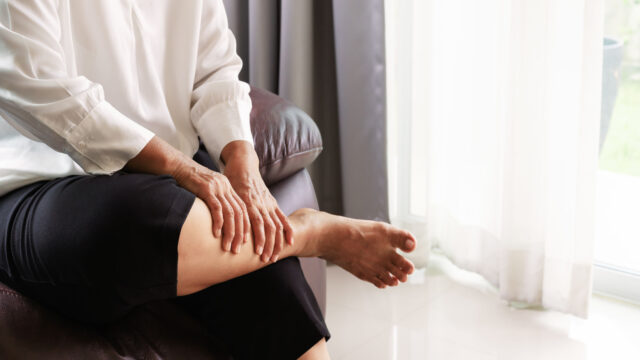Preventing Reoccurring Wounds
Tips For Preventing Reoccurring Wounds
Once you receive the proper wound care to heal your chronic wound, it’s important to keep your wound closed and be proactive in preventing reoccurring wounds. Here are some tips to help stop a wound from coming back.
Follow-Up Care
To ensure ongoing care and support, it is critical to adhere to all scheduled follow-up appointments at the Wound Care Center.
Pressure and Friction
Friction happens when you rub your skin on the sheets or skin on skin. Pressure relates to intense and/or prolonged force to a localized area of the body. Friction and pressure can cause the skin to tear, thus causing new wounds.
- Place a pillow or wedge between your legs or behind the back.
- Place a pillow or wedge under your ankles or under each arm for good positioning.
- Use a lifting sheet or lifting device to limit the rubbing against your skin.
Quit Smoking
Smoking can impair circulation and delay wound healing. Avoid smoking to reduce the risk of chronic wounds.
Nutrition and Diet
A good diet helps in preventing reoccurring wounds. Your body will need protein and vitamins to prevent complications.
- You need enough fluids, proteins, vitamins and minerals.
- ChooseMyPlate.gov is a good tool to use for nutrition and dieting, as it helps you find and build your healthy eating style that fits your way of life.
- Depending on your underlying conditions, your healthcare provider may put you on a special diet.
- Follow your doctor’s instructions to help with preventing reoccurring wounds.
Managing Chronic Health Conditions
Patients with chronic health conditions, such as diabetes or peripheral artery disease, should work with their healthcare provider to manage their condition and prevent further health complications.
Movement and Positioning
It is important for those with immobility challenges to keep moving. Prolonged sitting or lying down can cause new wounds to form.
- Turn and reposition when in bed.
- Choose how often you turn based on any red areas on skin. Also, consider if you are using a special mattress or seat pad and your preferences.
- If you cannot reposition yourself, a caregiver should reposition you.
- If you can get out of bed, you should go from bed to chair.
- If you can walk, you should stand and walk often.
- When sitting in a chair, change your position every 15 minutes.
- Keep your heels off of the bed with pillows, wedges or special footwear.
- Only raise the head of the bed as little as possible.
- Do not sit up too high in the bed.
Wear Proper Footwear
Wear properly fitting shoes to prevent foot injuries and blisters.
Skin Care
If you have had a chronic wound before or are at risk for developing a non-healing wound, it is important to check your skin every day with special attention to bony areas.
- Wash skin with warm water and mild soap.
- Dry all skin folds and creases. Pay special attention to the area between, under and around the toes.
- Protect skin from the sun to avoid sun damage.
- Avoid cold temperatures.
- Moisturize skin after cleansing.
- Be sure to avoid applying lotions or creams between the toes. Only apply to the top and bottom of the foot.
If your wound reopens, or you develop a new wound, contact your healthcare provider as soon as possible. Prevention and intervention are key.

